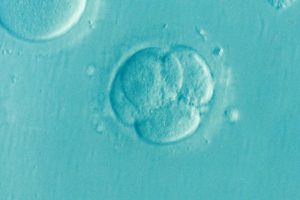
Ovulation
Ovulation typically occurs between cycle days 11 and 21 and is when a follicle inside of an ovary releases an egg, which then waits to be fertilized.
Around cycle day 10, it is important to begin monitoring your level of luteinizing hormone (LH) with ovulation prediction kits (OPKs) so you are able to observe when you experience an LH surge. There is typically a 5 to 6 day period where you will be most fertile during the month, with your peak fertility being 24 to 36 hours after your LH surge.

During ovulation, there is typically only one egg released. However, if you are over the age of 40, have a history of multiples in your family, or are taking certain fertility medications, it is possible that you may release more than one egg during ovulation.
Once the egg has been released, it will travel down the fallopian tube to be fertilized and will be viable for approximately 12 to 24 hours before it begins to disintegrate. If the egg is successfully fertilized, it will then travel down the fallopian tube and into the uterus for implantation during the luteal phase. Implantation typically occurs within 6 to 12 days after ovulation.
The most common ovulation symptoms include:
- Increased libido
- Change in the consistency of cervical mucus (CM)
- Increased CM
- Changes in basal body temperature (BBT)
- Mittelschmerz (mild cramping)
- Spotting
- Fatigue
- Heightened senses
- Nausea
- Headaches
Browse all Articles:
Trying to Conceive
Pregnancy
Motherhood
Self Care
SingleMomsByChoice.org is run by single moms by choice for single moms by choice, dedicated to helping educate, enlighten and empower women who are thinking about or who have decided to have a child “on their own” through donor insemination, egg or embryo donation, adoption or other assisted means.


